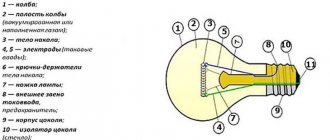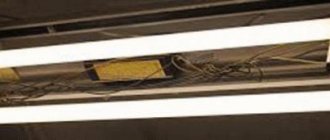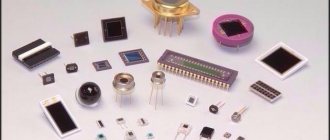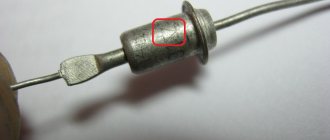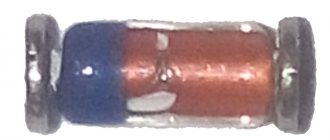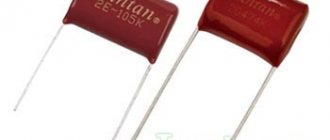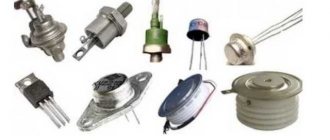The popularity of new models of light sources is explained by the need to reduce the consumption of energy resources. Energy-saving lamps are used in everyday life and are suitable for lighting the street, production workshop, educational and medical institutions. The efficiency of the mercury tungsten arc (mercury-mercury) lamp is ensured by the hybrid design of the light-emitting elements and the e40 base, which is compatible with mounts for conventional incandescent lamps.
Features of the DRV 250 lamp
The mercury-type energy-saving lamp is produced by the largest world-famous companies specializing in the supply of lighting fixtures and equipment components. Products are manufactured from modern materials using innovative technologies.
The DRV 250 light bulb consists of a flask with a high-pressure argon medium, a tungsten spiral and a mercury discharge torch. It does not require a starting control device . The product can be installed in ordinary sockets, just like the usual incandescent light bulbs.
There is an opinion that in everyday life and at work it is better to use a hybrid light source with increased emission potential. In practice, it turns out that the performance characteristics of e40 are 50% lower compared to inductive choke DRL devices. The reduction in pulse efficiency occurs due to the limitation of the voltage flowing through the burner head. Its power and resistance are controlled by a starting device.
When the light bulb is activated, a cathode drop in the operating mode to 20 V occurs in the choke light source. After the main element of the e40 gas-discharge lamp lights up, its voltage rises, and the voltage readings on the tungsten coil decrease exponentially. The technical characteristics and design of the working elements, compared to an incandescent lamp, which can be distinguished by the design of the working elements and appearance, provide a brighter glow. The spiral has 30% less electrical energy.
Low efficiency of DRV
As a result of comparing the light parameters of two types of lamps, it turns out that tungsten shows almost half the operating efficiency. This happens due to the fact that as the burner heats up, the voltage of the torch increases, and the voltage of the tungsten coil, on the contrary, decreases.
In addition to the voltage difference, the glow efficiency of the DVR lamp is influenced by the presence of active ballast , which limits the current. In this case, no additional energy transfer occurs, so the burner glow period is reduced by approximately 30%. As a result, the luminous flux decreases and the lamp shows low efficiency.
Low technical performance is compensated by other properties. Among the advantages of mercury lamps with a tungsten spiral inside it is worth noting:
- possibility of use without ballast equipment;
- white glow of a warm spectrum;
- high-quality color rendering with a wider spectrum of luminescence;
- voltage stabilization during operation;
- use as an alternative to conventional incandescent lamps.
These properties make it possible to use tungsten arc lamps not only as lighting devices indoors. They are also successfully used in open spaces, which include construction sites, parking lots, park areas, and streets. Using the DVR 250 models, artificial irradiation of greenhouse plants is carried out.
What kind of lighting do you prefer?
Built-in Chandelier
Sometimes lighting technology brings surprises: an unsuccessful light source becomes so popular that leading lighting companies produce it on a mass scale. We are talking about mercury-tungsten arc lamps (MAT) .
Therefore, the possibility of directly replacing traditional lamps with more efficient hybrid sources has ensured a very high demand for DRV lamps. In Ukraine, more than 60% of purchases of high-pressure mercury lamps are for mercury-tungsten light sources .
But you need to be aware that the light parameters of such sources are much worse than even not very efficient DRL lamps. The reasons and features of the operation of DRV lamps will be discussed below.
At first glance, the efficiency of the hybrid source should be higher than that of each individual source: the mercury burner excites the phosphor, and the tungsten filament additionally makes a small but contribution to the total luminous flux. In practice, the opposite picture turns out: the efficiency of DRL lamps is 30-50% lower than that of DRL lamps with an inductive choke.
Let's try to understand the reasons for this phenomenon. First of all, about the efficiency of the glow of the tungsten filament, which plays the role of a current limiter through the torch. Its resistance and power are calculated from the starting conditions of the mercury burner. During initial ignition, the voltage on the burner is equal to two cathode potential drops, i.e. about 20V.
As the burner heats up, the voltage on it increases to 60-70V, and on the coil it correspondingly decreases. Therefore, in operating mode, a tungsten filament shines a little better than an incandescent lamp turned on at half the operating voltage. But it’s shining! The second reason for the low efficiency of the DRV lamp is less obvious.
The burner of DRL lamps usually works with an inductive ballast. When the mains voltage passes through the amplitude value, the inductance begins to release the accumulated energy to the load, “pulling” the voltage on the burner. Therefore, the “platform” of the plasma column illumination when powered by an inductive ballast is about 80% of the duration of the half-cycle of the mains voltage.
But when the current is limited by an active ballast (tungsten helix), there is no such energy pumping. Therefore, the duration of the burner glow is reduced by 25-30%. Accordingly, the luminous flux and efficiency of the lamp decreases. The contribution of the glow of the tungsten helix cannot compensate for this drop; it can be completely neglected.
The range of these sources is limited: lamps with a power of 160 with an E27 base and more powerful lamps of 250, 500 W with an E40 base. Some companies offer lamps with a power of 700 and 1000 W, but they have even more limited use.
Expert opinion
It-Technology, Electrical power and electronics specialist
Ask questions to the “Specialist for modernization of energy generation systems”
Types, types of mercury lamps and their main characteristics These properties make it possible to use tungsten arc lamps not only as lighting devices indoors. Ask, I'm in touch!
Explanation of markings
In the name of the DRV lamp, the decoding of the symbols is as follows: “arc mercury-tungsten.” According to the principle of operation, it is similar to sodium and mercury light sources, but unlike them, it has a tungsten spiral, which allows you to turn on the device without an external ballast that regulates the starting voltage.
All fluorescent type spotlights operate on alternating current from a 220 V network. Chokeless devices with an e40 base have increased luminous efficiency compared to conventional incandescent lamps and have a long service life. When they fail, they require special conditions for disposal.
Decoding the alphabetic and digital markings allows you to select a device with optimal power in accordance with the user’s requirements. The lamps are recommended for use in lighting systems for public areas. Depending on the characteristics of the device, a direct stream of light will help illuminate a parking lot, park area, greenhouse, street, construction site, room for animals and poultry, and utility yard.
Application area
This light source was good in its time, but now there are more effective modern solutions. Technically, DVRs can also be used for street lighting, but they are used very rarely in this capacity. But they are still found in park areas, parking lots, and construction sites. This is due to the initial short service life.
More often they can be found indoors. They mainly illuminate production areas of industrial facilities and warehouses.
Thanks to the emission spectrum, DRV-250 can be successfully used for supplementary lighting of plants in greenhouse conditions. This applies only to the DRV-250 model.
Considering the shortcomings of these illuminators and their imminent removal from production, this lighting technology is losing its relevance.
- Related Posts
- Lamps with e27 base: the most powerful, advantages and disadvantages
- Types of lighting, fixtures and lamps for the bathroom
- TOP 10 LED lamps of 2022
Technical aspects
The most important indicators of a mercury light source with an e40 base are the design of the internal part of the device, the shape of the bulb, and the dimensions of the threaded base. The economic effect of the device may differ in operating conditions. The gas-discharge soffit from the Lisma brand for street lighting, which does not create a flickering effect in the event of voltage surges in the electrical network, does not require a special device for igniting the arc. At a power of 500 W, a luminous flux of 4 - 5 thousand lm is created.
Characteristics:
- Name - DRV lamp;
- Type - mercury;
- Power - 500 V;
- Shape - ellipse;
- Manufacturer - ;
- Purpose - street;
- The flask coating is matte;
- Base - e40.
When marking energy-saving appliances, digital and letter values are used to indicate the power and type of product. It is not difficult to decipher these meanings. Examples:
- DRL 250 - arc mercury phosphor lamp with a power of 250 V;
- DRV 160 is a mercury-tungsten arc lamp with a power of 160 V.
The source of an even luminous flux DRV 500, the characteristics of which are determined by the parameters of the base, can have a mixed type design. The starter circuit may contain a choke. The ballast serves to reduce the voltage on the electrodes by increasing the voltage in the active luminescent device. The device is made in the form of a coil with a wire wound around a ferromagnetic core. To reduce reactive energy in the E40 lamp circuit, it is enough to disconnect the compensating capacitor.
Low efficiency of DRV
As a result of comparing the light parameters of two types of lamps, it turns out that tungsten shows almost half the operating efficiency. This happens due to the fact that as the burner heats up, the voltage of the torch increases, and the voltage of the tungsten coil, on the contrary, decreases.
In addition to the voltage difference, the glow efficiency of the DVR lamp is influenced by the presence of active ballast , which limits the current. In this case, no additional energy transfer occurs, so the burner glow period is reduced by approximately 30%. As a result, the luminous flux decreases and the lamp shows low efficiency.
Low technical performance is compensated by other properties. Among the advantages of mercury lamps with a tungsten spiral inside it is worth noting:
These properties make it possible to use tungsten arc lamps not only as lighting devices indoors. They are also successfully used in open spaces, which include construction sites, parking lots, park areas, and streets. Using the DVR 250 models, artificial irradiation of greenhouse plants is carried out.
Expert opinion
It-Technology, Electrical power and electronics specialist
Ask questions to the “Specialist for modernization of energy generation systems”
DRL lamps: a popular hybrid of two different sources » Website for electricians - articles, tips, examples, diagrams In the absence of a ballast, the DRL lamp will burn out due to the passage of high current values through the electrodes. Ask, I'm in touch!
Disposal of mercury lamps
Spent and defective mercury-type lamps belong to the first hazard class waste. They must be disposed of using special equipment. During the processing process, one of four methods can be used:
- amalgamation;
- heat treatment;
- firing at high temperature;
- chemical or metallurgical method.
All disposal methods are aimed at separating and sedimenting mercury vapor, its sublimation, followed by burning of organic components. The final products of processing DRV and DRL lamps without chokes are mercuric chloride and sorbent.
- Author: admin
Rate this article:
- 5
- 4
- 3
- 2
- 1
(0 votes, average: 0 out of 5)
Share with your friends!

